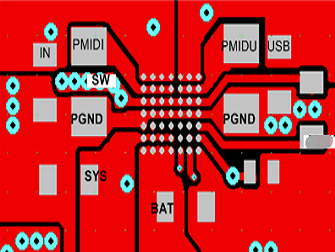Rigid-flex circuits have become increasingly popular in recent years due to it combines the flexibility of flex circuits and rigidity & reliability of FR4 PCB. One of the key design considerations when creating a rigid-flex circuit is the impedance value. For general high-frequency signals and RF circuits, 50ohm is a most common value that designers used and manufacturer recommended, so why choose 50ohm? Does 30ohm or 80ohm is available? Today, we will explore the reasons why a 50ohm impedance is the optimal design choice for rigid-flex circuits.
What is Impedance and Why it is important?
Impedance is a measure of resistance to the flow of electrical energy in a circuit, which is expressed in Ohms and performs a critical factor in the design of the circuits. It refers to the characteristic impedance of the transmission trace, which is the impedance value of the electromagnetic wave while transmitting in the trace/wire, and is related to the geometric shape of the trace, the dielectric material and the surrounding environment of the trace. We can say, an impedance affects the efficiency of energy transfer and the overall performance of the circuit.
50ohm Impedance for Rigid-Flex Circuits
There are several reasons why a 50ohm impedance is the optimal design choice for rigid-flex circuits:
1. Standard and default value authorized by JAN
During the World War II, impedance selection was entirely dependent on the need for use, and there was no standard value. But as technology advances, impedance standards need to be given in order to strike a balance between economy and convenience. Therefore, the JAN Organization (Joint Army Navy), a joint organization of the United States military, finally chose 50ohm impedance as the common standard value for consideration of impedance matching, signal transmission stability and signal reflection prevention. Since then, 50ohm impedance has evolved into the global default.
2. Performance maximization
From the PCB design perspective, under the 50ohm impedance, signal can be transmitted at maximum power in the circuit, thus reducing signal attenuation and reflection. Meanwhile, 50ohm is also the most commonly used antenna input impedance in wireless communications. Generally speaking, lower impedance, the performance of transmission traces will be better. For a transmit trace with a given line width, the closer it is to the ground plane, the corresponding EMI (Electro Magnetic Interference) will be decrease, and crosstalk will decrease as well. But, from the point of view of entire path of the signal, impedance affect the drive capacity of chips –most of early chips or drivers can’t drive transmit line which lower than 50ohm, while higher transmit line were difficult to implement and did not perform as well, so a compromise of 50ohm impedance was the best choice at the time.
3. Simplified DesignIn
PCB design, it is always to need to match with line space and width to reduce the signal reflection and crosstalk. So when designing traces, we will calculate a stack up for our project, which is according to thickness, substrate, layers and other parameters to calculate impedance, such as below chart.According to our experience, 50ohm is easy to design stack up, that’s why it is widely used in electric industries.

4. Facilitate and smooth production
Considering the equipment of most existing PCB manufacturers, it is relatively easy to produce 50ohm impedance PCB.As we know, lower impedance needs to match wider line width and thin medium or large dielectric constant, it is such difficult to meet in space for the current high density circuit boards. While higher impedance needs thinner line width and thicker medium or smaller dielectric constant, which is not conductive for EMI and crosstalk suppression, and reliability of processing will be poor for multilayer circuits and from the perspective of mass production.Control 50ohm impedance in the use of common substrate (FR4, etc.) and common core, the production of common board thickness such as 1mm, 1.2mm, can be designed common line width of 4~10mil, so the fabrication is very convenient, and the processing of the equipment is not very high requirements.
5. Compatibility with High-Frequency Signals
Many standards and manufacture-devices for circuit boards, connectors, and cables are designed for 50ohm impedance, so using 50ohm improves compatibility between devices.
6. Cost-effective The 50ohm impedance is an economical and ideal choice when considering the balance between manufacturing cost and signal performance.
With its relatively stable transmission characteristics and low signal distortion rate, 50ohm impedance is widely used in many fields, such as video signals, high-speed data communications, etc. However, it is important to note, that while 50ohm is one of the most commonly used impedances in electronic engineering, in some applications, such as radio frequency, other impedance values may be required to meet specific requirements. Therefore, in the specific design, we should choose the appropriate impedance value according to the actual situation.
Best Technology has rich manufacturing experience in rigid flex circuit board, whatever single layer, double layers or multi-layer FPC. In additional, Best Tech offers FR4 PCB (up to 32layers), metal core PCB, ceramic PCB and some special PCB such as RF PCB, HDI PCB, extra thin and heavy copper PCB. Welcome to contact us if you have PCB inquiries.










 2023-04-06
2023-04-06
 BEST
BEST

.png)
.png)
.png)
.png)

.png)

